5 things to know about COVID-19 this week
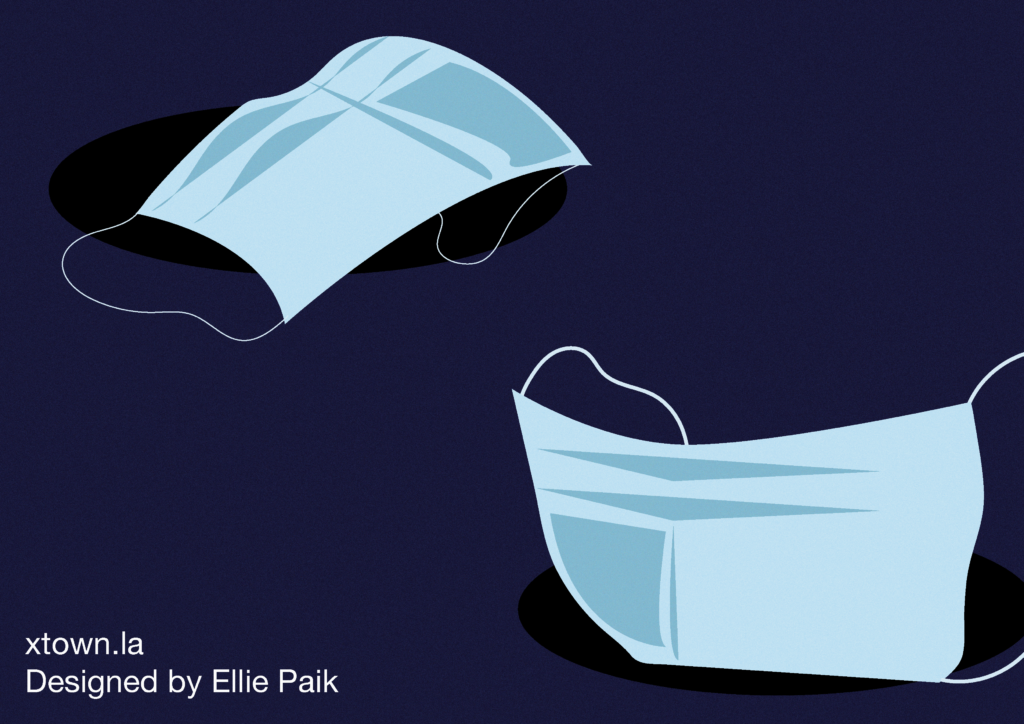
The pandemic endures, though the situation in Los Angeles County continues to improve. As it does, Crosstown stays up to date with a weekly report on the latest COVID-19 data and trends. Here is everything you need to know.
1) An end on the horizon
On Monday, President Biden announced that he plans to let the COVID-19 public health emergency expire on May 11, indicating that the worst of the pandemic is behind us. That appears to be the situation in Los Angeles County, where the average number of daily infections is now below 1,000.
While many will celebrate the end of the designated emergency, there are real-world consequences. A number of COVID-19 tests, treatments and vaccines will no longer be free, especially for those who lack health insurance.
Still, it is a significant step forward for public health. The New York Times reported that from 2020 to mid-2022, COVID-19 was the third-leading cause of death in the United States. Now it doesn’t rank even among the top five.
2) More free hospital beds
Since the beginning of the year, the local hospitalization figure has been cut nearly in half.
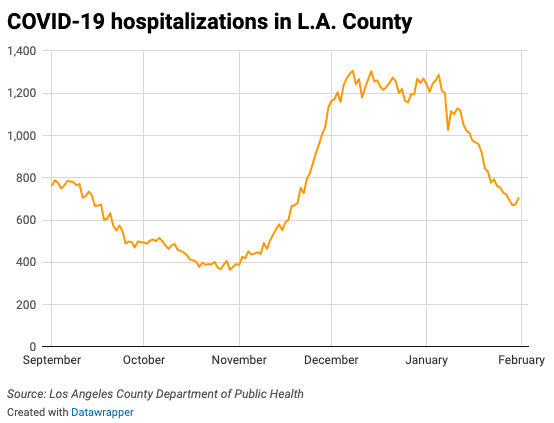
On Tuesday, there were 705 patients with COVID-19 in county hospitals. This marks a 43.4% decrease from four weeks ago. Hospitalizations have been sitting below 1,000 since Jan. 16.
[Get COVID-19, crime and other stats about where you live with the Crosstown Neighborhood Newsletter]
Back in early 2021, the first winter of the pandemic, hospitalizations surpassed 8,000. The following January, as the Omicron variant surged, figures were above 4,000 during the month. That makes this the healthiest January yet on the COVID-19 front.
3) Hospitalizations, part 2
Although the number of hospitalizations is widely cited (including by Crosstown), the figure doesn’t tell you everything. That’s because it actually encompasses two categories: patients hospitalized because of a COVID-19-related illness such as pneumonia or respiratory distress; and people who enter the hospital for another reason, get tested while there, and are found to be positive for COVID-19; they may even be asymptomatic. These are known as incidental cases.
The figures have changed significantly over time.
According to the Los Angeles County Department of Public Health, in August 2021 an estimated 81% of COVID-classified patients were hospitalized due to a COVID-associated illness. Just 19% of patients experienced incidental detection.
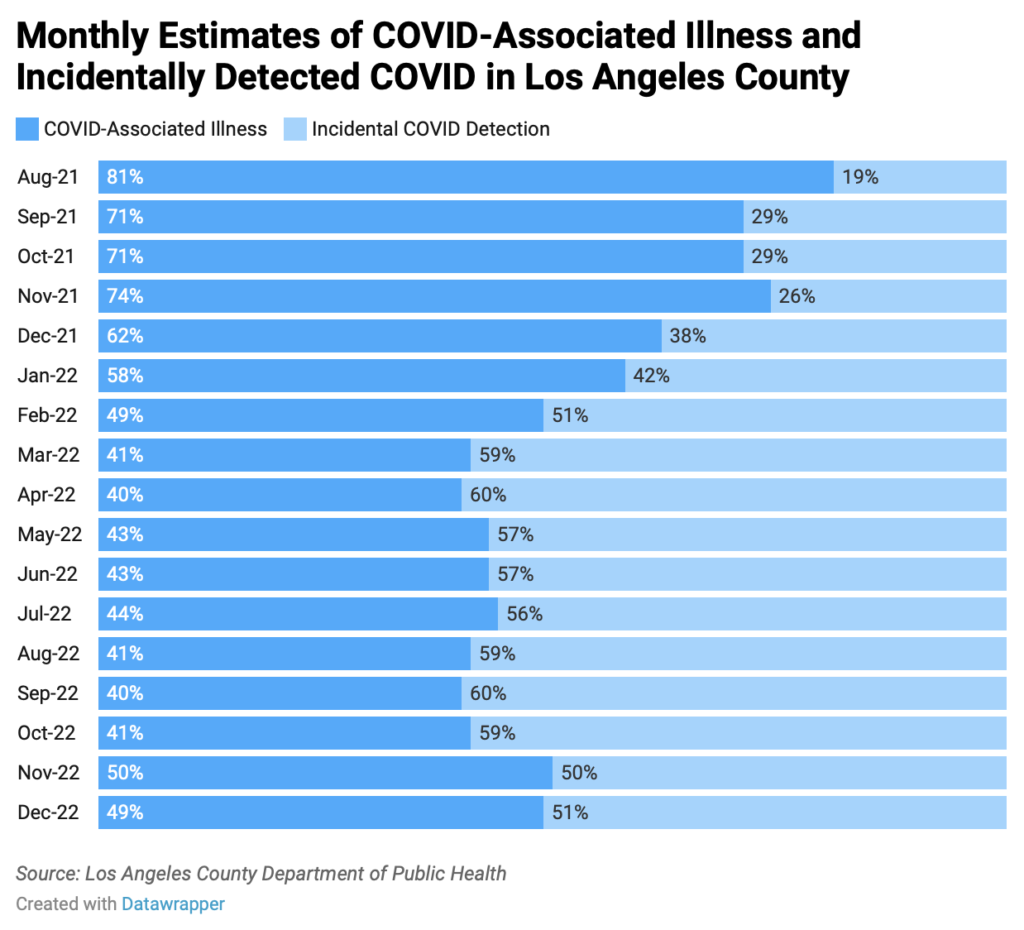
Then things shifted. In September 2022, 40% of the hospitalizations were for people with a COVID-19 illness, and 60% were from incidental detection. In December, the figures swung back and were nearly evenly divided.
4) The drop continues
Both the number of new COVID-19 cases and deaths continue to decline across the county. From Jan. 25–31, the Department of Public Health reported 6,418 new infections. That marks an 11.6% drop from the week prior.
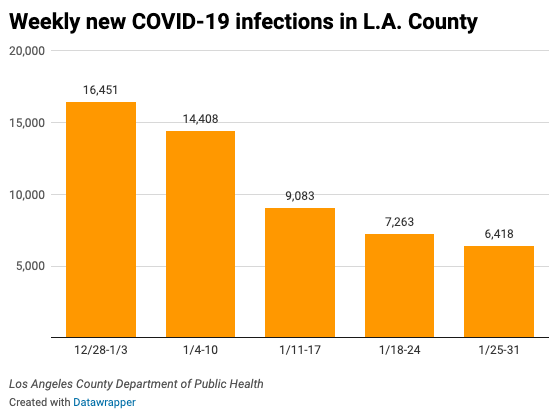
On Tuesday, the seven-day case average in Los Angeles County dipped to 917, the lowest figure since mid-October.
While deaths had been stagnant in recent weeks, fatalities have begun to slow. From Jan. 25–31, there were 120 deaths due to COVID-19, compared with 143 the week before.
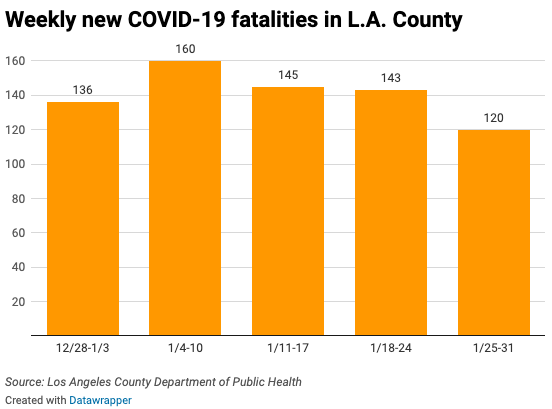
On Tuesday, the seven-day average for COVID-19 related deaths fell to 17.
5) Pushing for a boost
Nearly three years into the pandemic, almost everyone who wanted a shot has gotten jabbed, and it is difficult to persuade anyone else to get vaccinated This remains the case even though health officials continue to urge residents to stay up to date on their boosters, and despite reminders that even for those who contract COVID-19, a shot can significantly reduce the severity of symptoms.
There is science behind the claim. The County Department of Public Health last week announced that, in a recent study, hospitalization rates were over six times higher for unvaccinated individuals compared with those who have received the updated booster. The death rate was more than seven times greater for people without a shot.
Still, only 16.8% of Angelenos ages 5 and up have received the bivalent booster, according to the Department of Public Health’s Vaccine Dashboard. That works out to just over 1.6 million people.
How we did it: We analyzed coronavirus data related to new cases, deaths, hospitalizations and vaccinations provided by the Los Angeles County Department of Public Health, as well as data from the California Department of Public Health.
Interested in our data? Check out the Crosstown coronavirus interactive map or email askus@xtown.la.






